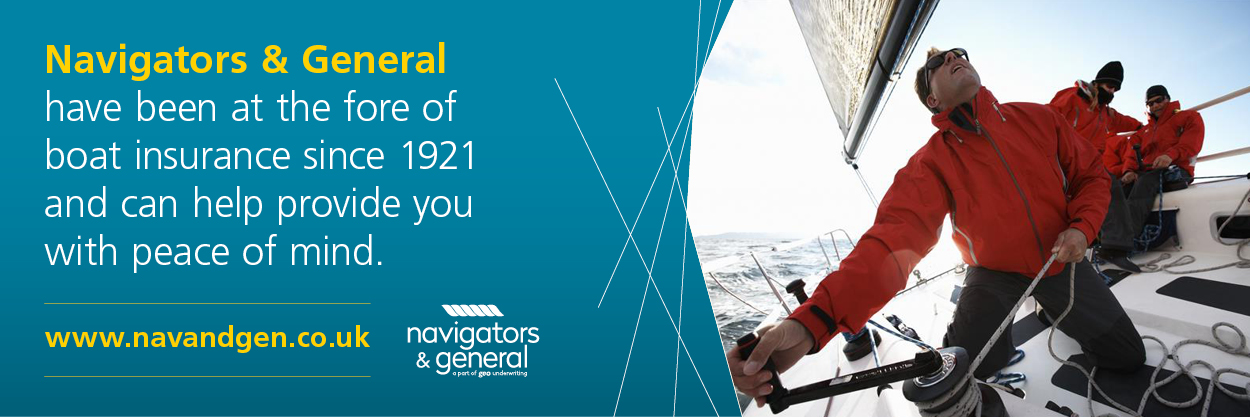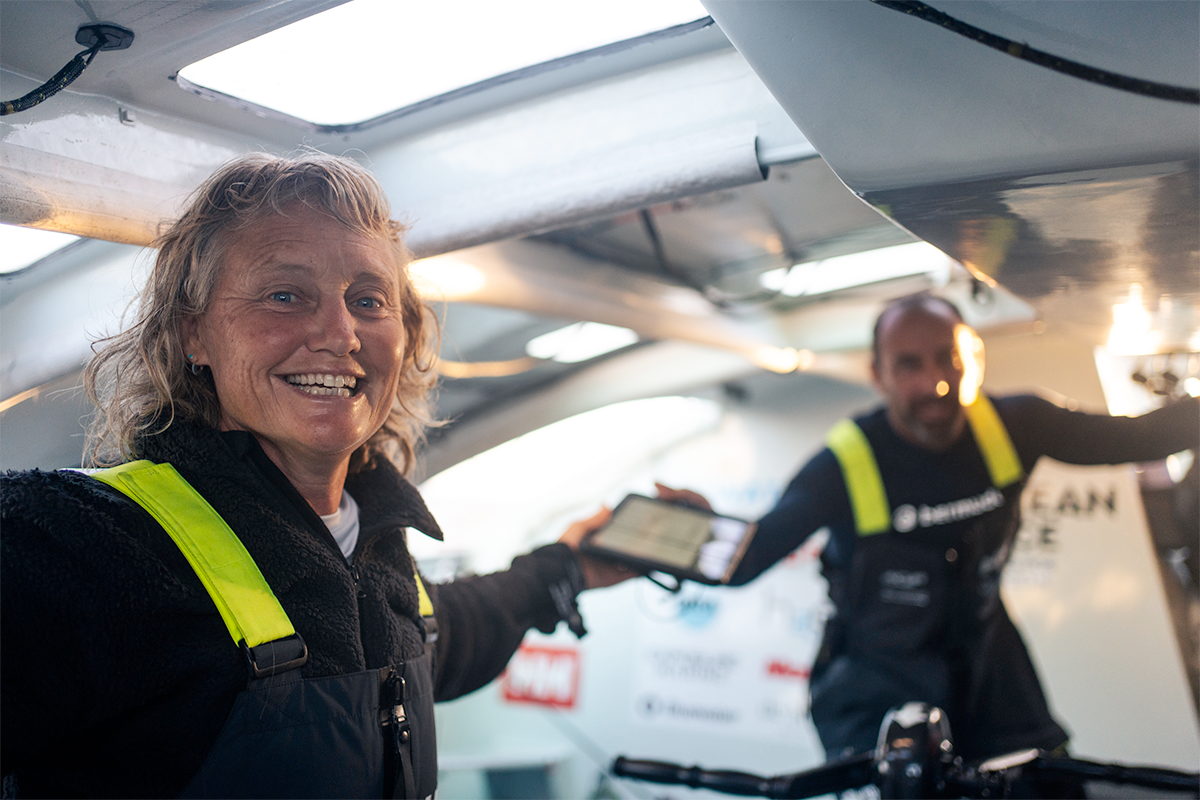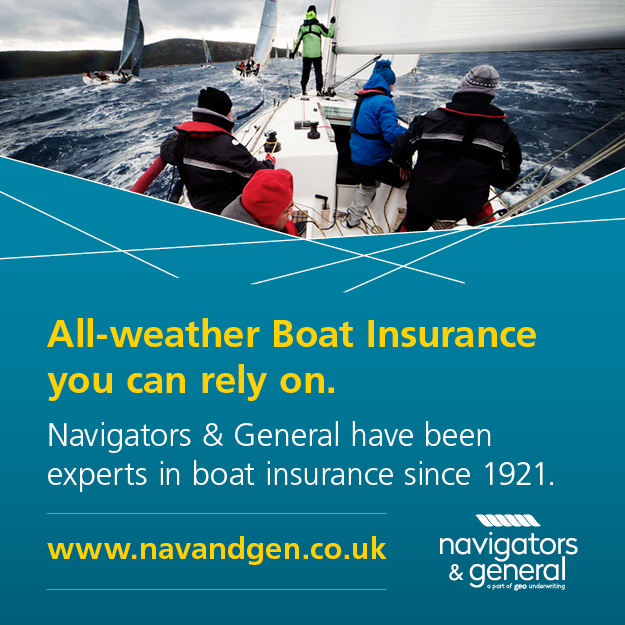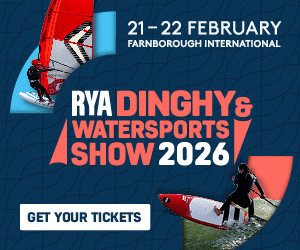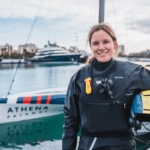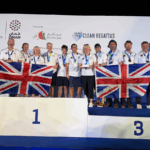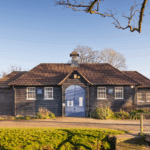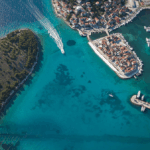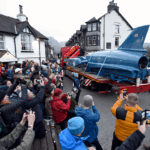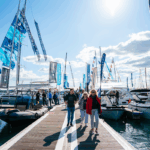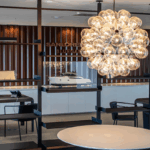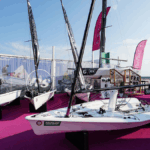The Matosinhos-Porto Fly By barely lasted long enough for sailors to catch their breath. Within three hours of docking, the IMOCA fleet was back at sea and hammering south in the kind of conditions every offshore skipper dreams of.
Paprec Arkéa, second into Porto and 42 minutes behind Biotherm at the restart, wasted no time in pressing their advantage. Skipper Yoann Richomme described the restart as “super-fast. We had a great angle, a good sail setup, and we enjoyed four to five magical hours.”
His crew was equally buoyant. “We got a wind that wasn’t forecast, and now we’re sending it at 25 knots,” reported Mariana Lobato as they flew down the coast of Cascais. “Biotherm took the left, we’re going to the right, and we’re managing to break away. It’s perfect!”
Biotherm had led into Porto, collecting maximum points at the halfway scoring gate, but skipper Paul Meilhat warned that his boat was less comfortable downwind, and the forecast quickly proved him right.
“It’s really good to start the second part with a little advantage,” he said, “because it will be hard during the twelve hours just after Cape St. Vincent. The first part of the race was really windy, downwind, really fast.”
Those conditions proved decisive. As the fleet surged past Cascais and into the night, Paprec Arkéa drew level, and by Cape St. Vincent they had edged ahead. Footage on board showed the boat’s speedo flashing 30 knots, evidence of a team throwing everything into the drag race.
What stood out was the approach: across the fleet, crews have been hand-steering rather than relying on their sophisticated autopilot systems. Paprec’s sailors have been rotating constantly at the helm – Richomme, Lobato and Pascal Bidégorry taking 45-minute stints, surfacing briefly into walls of spray before diving back below.
Jack Bouttell described a “difficult morning” on board Biotherm. “We had a bit of a transition zone to go through and Paprec got through it a lot better than us. So we were very close to them and they had a bit of a gain. But now we’ve got the wind back and going quite fast.”
At the crucial moment, Biotherm didn’t have the right sail to hand, missing the smaller fractional reacher that would have been perfect in 25–30 knots downwind. They were left to hang onto a bigger masthead sail, keeping the boat under control but not able to match Paprec’s speed.
“There was quite a lot of nose-diving and just trying to manage the boat, but we got through it okay,” said Bouttell.
By 11:00 UTC, Paprec Arkéa were nine miles clear, with Biotherm and Holcim-PRB locked together in their wake. Holcim’s Alan Roberts noted the team had found a new level: “We’ve seen significant improvements throughout the first part of the leg, but definitely more to be made. It’s good to have points on the scoreboard, but there’s still another three or four days of racing left to go before Cartagena.”
Behind the top three, Team Malizia holds fourth, while Allagrande Mapei Racing and Canada Ocean Racing are pushing hard toward Gibraltar. “We had to do quite a lot between the TSS and the coast, and we paid the price,” admitted Allagrande’s Manon Peyre after slipping miles on Malizia.
At the back of the fleet, Team Amaala continues to fight on despite losing touch in the light conditions on the approach to Porto. Skipper Alan Roura tried to keep spirits high, joking: “We love to be in light winds because this way we spend more time together!” Restarting this morning, Amaala faced a deficit of 400 miles on the leaders, a punishing margin yet one they’re determined to chip away at.
For Paprec Arkéa, today marks a vindication. Their boat has long been tipped as fastest in heavy downwind, and they finally got the chance to prove it. “These are really Paprec’s conditions,” conceded Bouttell. “We’re doing the best we can to stay as close to them as possible. Then it should be our conditions again once we get into the Mediterranean, with a bit lighter wind, or upwind, or reaching.”
The frontrunners are set to pass Gibraltar this afternoon, skirting north of the exclusion zone and staying close to the coast to shave miles. Beyond the strait, the forecast has shifted. Conditions now look lighter than expected, with a sharper transition from the current westerlies to an easterly flow carrying the fleet toward Cartagena. That could play into the hands of the chasing boats, leaving Paprec Arkéa with an even tougher job to defend their lead.
Race coverage inclulding the Race Tracker is available on www.theoceanrace.com as well as via media partner Warner Bros. Discovery and their Eurosport, TNT Sports, HBO Max and Discovery+ platforms. See the How to Follow guide here.




